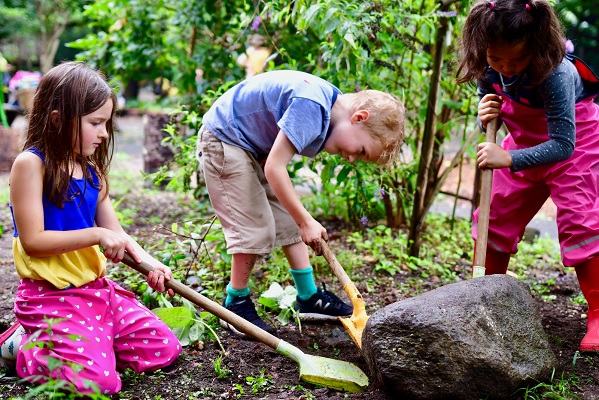In this article, we’ll discuss the Physical Development of Preschoolers. Since the foundations for the harmonious physical development and health of the child are laid at an early age, it is important to devote enough time to sports. Let’s talk about the features of the physical development of preschool children.
Features of the Development of Preschoolers:
Children 3-4 years old jump, run and perform various simple exercises. But they still have poorly developed coordination of movements and poorly developed muscles.
Children 4-5 years old already have quite well-developed coordination of movements and balance. Therefore, they master riding a two-wheeled bicycle, dancing, and gymnastics. The running stage begins, in which the child can experience the moment of separation of both legs from the ground.
At 6-7 years old, a child can master complex movements, and achieve success in swimming, dancing, and figure skating. In children at this age, the eye develops well, ease of movement appears, and speed increases.
Child Development At Home:-
Parents should adhere to a daily routine, and a healthy diet, engage in physical education with the child daily, play outdoor games, and walk in the fresh air.
The child should get enough sleep (time depends on age). You should go to bed no later than 20.30-21.30. The earlier the child wakes up, the earlier they should go to bed.
You have to exercise in the morning. It shouldn’t be long. Enough for 7-12 minutes. Tilts, turns, jumps, swings of arms and legs, and other simple exercises will help you recharge your batteries and wake up.
It is important to remember proper nutrition. The menu should be balanced, varied, and complete. Dishes should be chosen as tasty, those that the child likes. The diet should include fruits, vegetables, cereals, eggs, fish, meat, and dairy products. From sweets, you should choose only healthy ones: honey (if there is no allergy), berries, dried fruits, and fruits. A hearty breakfast, a nutritious dinner, and a hearty lunch, as well as healthy snacks, should be daily. You can’t skip meals.
Every day you need to walk in the fresh air: among other benefits, scientists today attribute walks to the prevention of myopia in children. At this time, you can play outdoor games: football, volleyball, tag, hide-and-seek, and many others. In winter, you can play with snowballs, ski, and skate.
Sports Clubs and Sections:-
It is useful to play sports in special circles or sections. If the child likes it, then it’s worth a try. It is not necessary to make an athlete out of him. But regular reasonable exercise is very beneficial for health.
Swimming and figure skating will help the child to keep balance, and strengthen the muscular corset. Gymnastics will develop flexibility and agility. Team sports contribute to the development of endurance and speed. Martial arts teach self-control and attention.
The circle should be chosen taking into account the age, health, and abilities of the child. And, of course, it is worth remembering his desires. If a child wants to learn swimming, and parents want to enroll him in a karate section, you should listen to the desire of a preschooler.
Kindergarten:
In kindergarten, a lot of time is devoted to the physical development of the child. Classes for preschoolers are held several times a week. In addition, outdoor games, relay races and competitions, and physical education sessions are held. The children go outside twice a day.
When constructing classes, the age of children and their state of health are taken into account.
Physical Development of Preschoolers: An Overview of Ages 2-6
Since the foundations for the harmonious physical development and health of the preschool child are laid at an early age, it is important to devote enough time to sports. It is well-known that the physical development of preschoolers is crucial and has specific features. Children 3-4 years old jump, run and perform simple exercises, but they still have poor coordination of movements and underdeveloped muscles. On the other hand, children 4-5 years old already have good coordination of movements and balance, allowing them to master activities such as riding a two-wheeled bicycle, dancing, and gymnastics. As children reach 6-7 years old, they are able to master complex movements and excel in sports such as swimming, dancing, and figure skating.

Parents play a crucial role in promoting their child’s physical development at home by adhering to a daily routine, and a healthy diet, engaging in physical education activities, and allowing time for outdoor games and walks in the fresh air. Children should also get enough sleep and have a balanced diet that includes a variety of healthy foods. Physical activity in the morning, such as simple exercises, can help recharge the child’s batteries and improve their overall well-being.
Cognitive and Physical Development of Preschoolers: A Balancing Act
In addition to activities at home, it is beneficial for preschoolers to participate in sports clubs or sections. Swimming and figure skating can improve balance and muscle strength, while gymnastics can increase flexibility and agility. Team sports can enhance endurance and speed, and martial arts can teach self-control and attention. When selecting a sports club or section, it is important to consider the child’s age, health, abilities, and interests.
Kindergartens also play a vital role in promoting the physical development of Preschoolers or Child’s by devoting significant time to physical education classes, outdoor games, relay races, and competitions. The classes are designed taking into account the age and health of the children, and they are held several times a week. In addition, the children go outside twice a day to play and engage in physical activity.
In conclusion, the physical development of preschoolers is a critical aspect of their overall growth and health. It is crucial to devote time to sports and physical activities at home, in sports clubs and sections, and in kindergarten to ensure the child’s harmonious physical development.
You May Also Like:- Natural Antibiotics Myths, 9 Facts, and Truth



